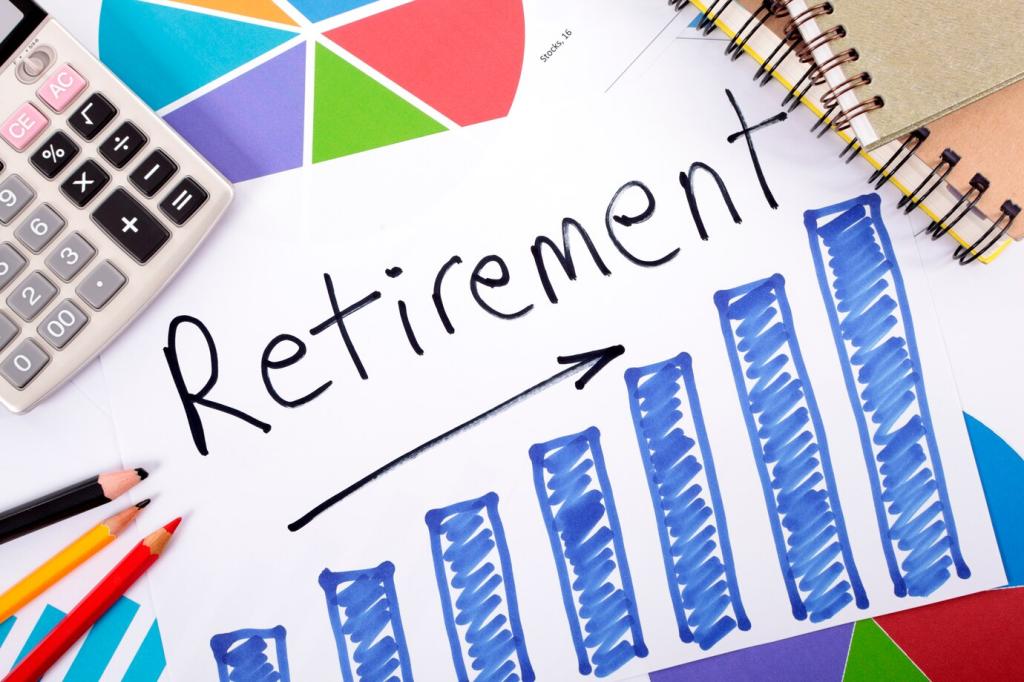Chosen theme: Comparing Pension Plans: What You Need to Know. Welcome to a clear, down‑to‑earth guide that helps you weigh options, sidestep pitfalls, and feel confident about the retirement income you are building. Stick with us, share your questions in the comments, and subscribe for fresh, practical insights on making smart pension choices.
Defined benefit plans promise a formula‑based paycheck for life, shifting investment risk to the sponsor. Defined contribution plans, like 401(k)s, place investment choices and risk on you. Think of a teacher’s pension versus a tech worker’s 401(k); both fund retirement, but responsibility and predictability differ.
Types of Pension Plans at a Glance
Costs and Fees That Quietly Shape Outcomes
A 1% annual fee can shrink a nest egg substantially over decades. Imagine two identical portfolios; the lower‑fee option can finish hundreds of thousands higher. When comparing plans, examine default funds’ expense ratios and the availability of low‑cost index options that preserve more of your compounding.
Costs and Fees That Quietly Shape Outcomes
Plans may include administrative, recordkeeping, or advisory fees that are not obvious at first glance. Carefully read plan disclosures and annual notices. Ask whether fees are per participant, asset‑based, or flat, and note whether employer subsidies offset costs today but could change in the future.
Costs and Fees That Quietly Shape Outcomes
Request clear, itemized fee disclosures, then compare apples to apples across plans. Look for revenue sharing, wrap fees, or mortality and expense charges in annuity‑style options. If something is unclear, ask the plan administrator for plain‑English explanations—and share your findings with our community to help others compare.
Risk, Guarantees, and What ‘Security’ Really Means
Defined benefit pensions promise formula‑based income, offering stability but depending on sponsor health and funding status. Defined contribution plans rise and fall with markets, giving you control but exposing you to volatility. Decide whether you prefer a known paycheck or flexible assets with potential for higher, yet uncertain, growth.
Employer Contributions, Vesting, and Portability
An employer match is a guaranteed boost. A 50% match up to a set percentage can dwarf small differences in fund performance. When comparing platforms, weigh the generosity and reliability of matching policies, plus whether automatic enrollment and auto‑escalation features help you capture the full benefit consistently.
Taxes Today, Taxes Tomorrow

Pretax contributions lower current taxable income but create taxable withdrawals later. If you expect lower retirement brackets, pretax may win. When comparing plans, evaluate contribution limits, employer match interactions, and whether pretax savings help you qualify for other benefits tied to adjusted income today.
Some plans offer lifetime income options, while others require you to manage withdrawals. Compare guaranteed streams against flexible, market‑based drawdowns. Many retirees blend approaches, creating a paycheck floor while keeping growth assets. Share your preferred mix and subscribe for upcoming case studies on combining strategies thoughtfully.
Turning Savings into a Reliable Paycheck
Bucket strategies, guardrails, and dynamic withdrawal rules can protect you when markets wobble. When comparing plans, look for tools that support rebalancing, automatic cash buckets, and low‑cost stable options. A plan that makes prudent behavior easy can be more valuable than one with flashier but harder features.
Turning Savings into a Reliable Paycheck
Real Stories: How People Compare and Choose
Mia compared two 401(k)s: one with glossy marketing and 1% higher fees, another with plain index funds. Ten minutes with fee disclosures convinced her. Five years later, her balance is meaningfully higher—and she urges coworkers to read the fine print before chasing trendy, expensive fund lineups.


Real Stories: How People Compare and Choose
Carlos loves his defined benefit plan’s stability but worried about inflation. He compared options and opened a Roth IRA to complement his pension. Now he sleeps better, knowing he has a guaranteed floor plus growth potential. He regularly reviews COLA rules and shares updates with colleagues in our forum.
Your Personal Checklist for Comparing Pension Plans

Clarity on Benefits and Risks
List what is guaranteed, what depends on markets, and how inflation is handled. Identify funding strength, default investment quality, and whether annuity options exist. A transparent plan is easier to trust during downturns, and your written notes will sharpen comparisons across multiple employers or providers.

All‑In Costs and Investment Menu
Capture expense ratios, administrative fees, and advisory charges in one place. Compare index availability, target‑date glidepaths, and stable value options. Favor simplicity and repeatability over complexity. If you discover hidden fees, post them for others here—your experience can help readers avoid costly detours.

Taxes, Access, and Service Quality
Note pretax versus Roth flexibility, rollover ease, and customer support responsiveness. Evaluate digital tools, planning calculators, and education resources. The best plan is one you will actually use. Subscribe for our upcoming deep‑dive worksheet that turns this checklist into a printable, side‑by‑side comparison template.
